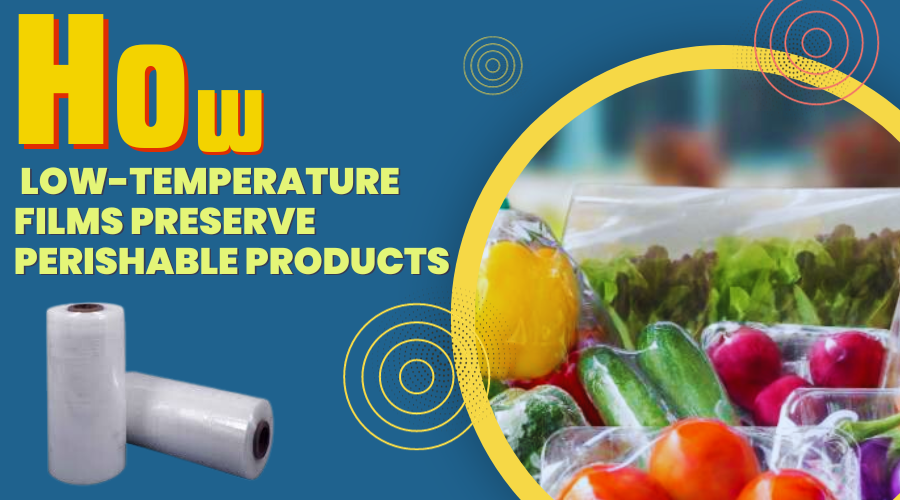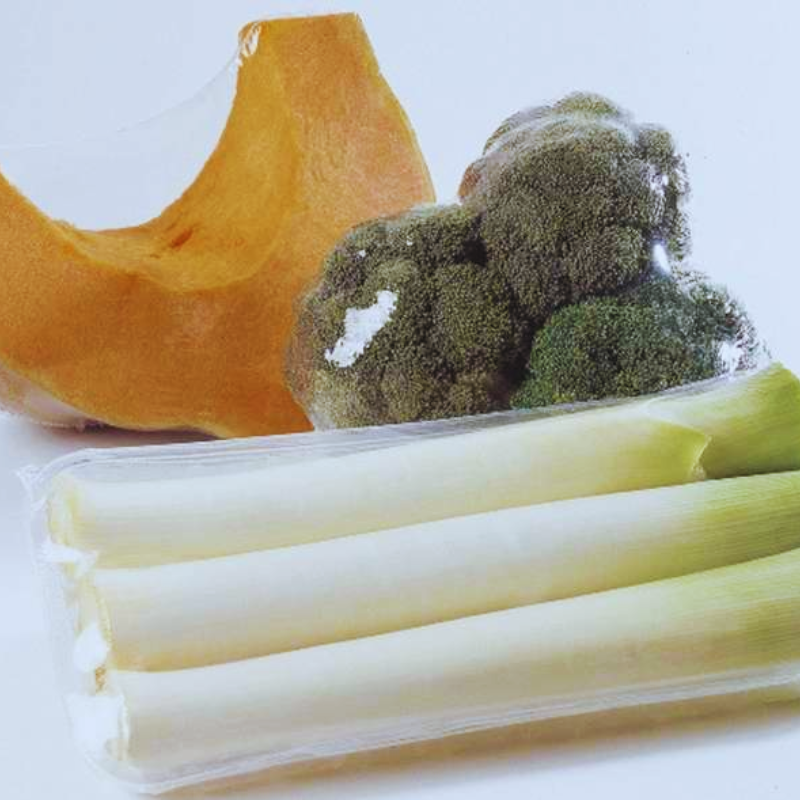


Innovative solutions have arisen in a world where the passage of time affects the freshness of perishable food. Low-temperature films are frequently underestimated and essential in increasing the shelf life of various items, from produce to dairy and meats. This article delves into the mysteries of these films, revealing the physics behind their freshness-preserving enchantment and investigating their practical applications. It demonstrates how low-temperature films have become unsung heroes in food preservation, allowing us to taste the delights of fresh, undamaged food in the face of time's unrelenting march.
A compelling molecular dance is at the heart of low-temperature films. These films are not only static barriers but also dynamic perishable product protectors. Wrapping food in a low-temperature film prepares it for a tiny performance.
The molecules in the film form a protective barrier around the meal, keeping out undesirable substances. It's like a gatekeeper, only allowing certain materials through. Because of their regulated molecular structure, low-temperature films can successfully maintain their internal environment, making them specialists at retaining freshness.
Consider this: Your fresh vegetables are placed in the refrigerator, carefully covered in low-temperature film. The film's molecules, which are so minuscule that they are undetectable to the naked eye, work hard to keep the optimal conditions within the package. They manage the temperature and humidity to maintain the environment ideal for your produce. This molecular alchemy keeps your vegetables crisp and vivid after you get them home from the store.

Humidity is a significant part of the answer if you've ever wondered why your leafy greens wilt and your fruits lose their sharpness. Moisture management is an integral part of preserving perishable food.
Low-temperature films flourish in this area because they are masters of humidity control. They can produce a microclimate that protects food from the drying impacts of the external environment due to their microscopic structure. This protective cocoon maintains the ideal moisture content within the packaging, preventing wilting, desiccation, and spoiling.
Consider a lettuce head wrapped in a low-temperature film. Inside, the film keeps the leaves fresh, crisp, and ready for your salad by maintaining the ideal humidity. It's similar to having your humidity butler for your vegetables.
As a result of this humidity management, your food stays fresh and retains its flavor and nutritional content. The crunch of an apple or the juiciness of a tomato is preserved as if you had just gathered them from your garden.
Low-temperature films can manage moisture and temperature, not only freshness guards but also food waste warriors. These films have emerged as a critical ally in a society where we seek to reduce waste and make the most of our resources.
Fresh produce is delicious, but it has a notoriously limited shelf life. If left untreated, vegetables and fruits will wither, turn mushy, or acquire ugly blemishes. This is where low-temperature coatings come in as fresh produce savers.
Wrapping fresh food in low-temperature films creates a microenvironment that mimics the conditions under which the produce grows. The layer keeps the humidity and temperature stable, preventing moisture loss and extending the crop's life.
Consider your favorite apples packaged with precision in low-temperature films. The film's molecular structure keeps the apples crisp, retaining their juiciness and flavor. As you reach for one, you'll experience that satisfying crunch and the burst of freshness that makes them irresistible.
The same goes for leafy greens. Whether it's a head of lettuce or a bundle of spinach, low-temperature films help these greens stay crisp and vibrant. Instead of wilted, sad-looking leaves, you're greeted with a fresh bouquet ready to elevate your salads and dishes.

Dairy goods such as milk, yogurt, and cheese are familiar household mainstays. However, these items have a short shelf life due to their vulnerability to bacterial development and deterioration.
Once again, low-temperature films come to the rescue. They act as a barrier against outside pollutants and aid in regulating temperature and humidity within the container.
Our yogurt is going sour too quickly. The low-temperature coating keeps these dairy pleasures creamy, unspoiled, and ready to complement your culinary milk. It can be kept fresh for a prolonged period when wrapped in a low-temperature film. You can eat your cereal with milk that is as creamy and wonderful as the day you purchased it—no more worries about mold growing on your cheese or masterpieces.
Consider opening a container of yogurt that has been wrapped in low-temperature film. Even when you're nearing the end of the container, the initial mouthful has the same creamy texture and tangy flavor you enjoy. It demonstrates the science behind these films and how hard they work to keep your dairy products delicious.
Meat is a common protein source for many people, whether a juicy steak or ground beef for burgers. However, keeping meat fresh and flavorful can be difficult due to its susceptibility to bacterial development and deterioration.
Once again, low-temperature films come to the rescue. These films provide a protective covering that protects meat from the elements. This layer aids in temperature and humidity regulation, ensuring that the beef preserves its quality.
Consider your favorite steak expertly wrapped in low-temperature film. When you prepare it a few days later, you'll see it's still as red and juicy as the day you got it. The meat remains delicate and tasty because of the film's preservation properties.

Ground meat, ideal for creating burgers or spaghetti sauce, also benefits from low-temperature films. When you open a package, you'll see the meat is fresh, with no unpleasant odors or discoloration. It demonstrates how these coatings help extend the heart's life and quality.
Q1: How do low-temperature films outshine traditional packaging methods?
A1: Low-temperature films offer a modern, precise way of controlling moisture and temperature, leading to extended shelf life and less food waste. Unlike traditional packaging, they create a microenvironment that replicates the conditions in which food thrives.
Q2: Are low-temperature films safe for food contact?
A2: Absolutely. These films undergo rigorous safety testing and meet stringent food safety standards, making them a trusted choice for food preservation. They are designed to ensure that food remains safe and free from contamination.
Q3: Can I use low-temperature films at home for food storage?
A3: While these films are primarily used in industrial and commercial settings, home-use options exist. As technology advances and the demand for longer-lasting, fresher food at home grows, we can anticipate the availability of home-friendly low-temperature film options shortly.
Low-temperature films have taken the front stage in the ongoing struggle to keep our food fresh and tasty. Based on preservation science, these novel materials have practical uses ranging from fresh produce to dairy goods and meats. As a result, food lasts longer and wastes less, promising a delicious and sustainable future.
Food preservation is a story about science, molecular dances, and the pursuit of the ideal humidity level. It's a voyage that mixes the intangible enchantment of molecules with the palpable pleasures of fresh food, dairy, and meat. It's a voyage that reminds us of how far we'll go to enjoy the pleasures of fresh, unspoiled food. And, as we continue to investigate and exploit the possibilities of low-temperature films, the future of food preservation appears brighter, fresher, and more tempting than ever before. So, the next time you bite into a crisp apple, relish a creamy scoop of yogurt or savor a properly cooked steak, remember that low-temperature films work ceaselessly behind the scenes to elevate your culinary pleasures.